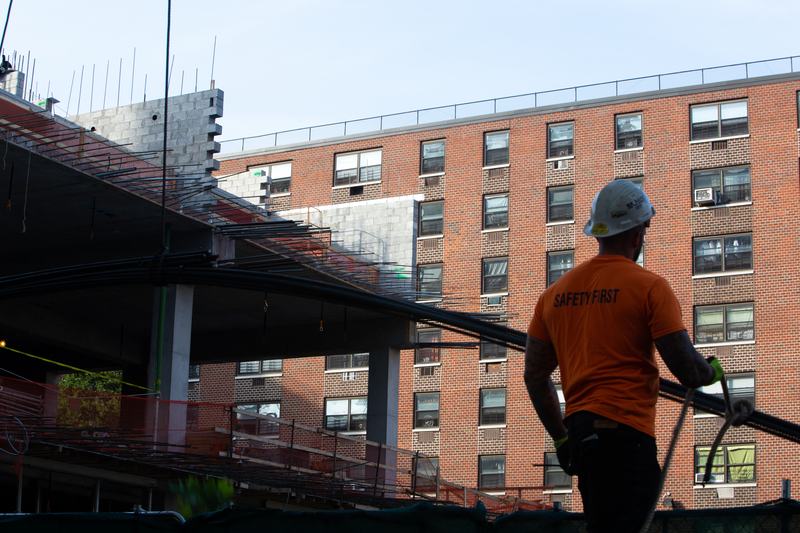
Harold Jennings has been watching East Harlem change all around him.
“A lot of small businesses are being pushed out and there’s a lot of residential construction that is not really affordable,” he said.
Jennings grew up in the Jefferson Houses near East 112th Street. He’s 33 years old and still lives in the same place. He’d like to move out of public housing and is considering Delaware or Virginia where the rents are lower, but he loves the diversity and culture in East Harlem, and he'd prefer to stay. If he wants a future in his neighborhood, he figures, he has to build it. Literally.
Jennings has set his sights on the area's booming construction industry and is taking classes with a nonprofit called Strive to gain new skills. He’s learning how to do electrical work, plumbing and carpentry, and practicing softer skills, like interviewing for a job.
Development is coming fast in East Harlem, he said, and he can either be part of it, or get pushed out. “The environment around me is forever changing and I need to adapt."
It’s true that parts of the neighborhood are practically vibrating with new construction, and the city recently rezoned the neighborhood to add another 3,500 apartments over the next decade.
Community Board member LaShawn Henry said all this new development is pushing up rents, and even though a quarter of the apartments coming from the rezoning are supposed to be affordable, they’ll still be too expensive for many residents. For people to stay, they will need jobs that pay well, and that includes work in construction. There is a range of salaries for these kinds of jobs: The median for laborers who earn a prevailing wage in New York City is about $85,000 a year. The community board wants 35 percent of workers on East Harlem construction sites to come from East Harlem. “People act like we don’t want to work,” said Henry. “We want to work, we want to make sure that we’re able to feed our families.”
But hyperlocal hiring isn’t so easy. Most companies use subcontractors who already have their own staff and hiring someone from East Harlem could mean laying off someone else. Plus, these jobs have strict safety requirements and developers say they have trouble finding residents with the required certifications.
L&M Development Partners has two huge projects coming to the East Harlem. Yasmin Cornelius, vice president of community affairs, said the company paid for a training program for 100 residents. “Then that’s our pool to hire people,” she said. The de Blasio administration is also trying to help with a new workforce training center coming to East Harlem as well as many city contracts that require developers to at least interview nearby residents for jobs.
But many of these projects only last a few months. Not surprisingly, organized labor says the best chance for consistent work is joining a union. “The only way to create career paths in the construction industry are through union apprentice programs,” said Gary LaBarbera, president of the Building and Construction Trades Council of Greater New York. “The real issue is whether the local unions are recruiting.” There’s a finite number of jobs, so getting into a union is hard. When they recruit for a hundred positions, thousands of people often show up.
Local nonprofits like Strive are trying to give residents a better shot at construction jobs. “Employed individuals will become good customers, good taxpayers and they will help the economy continue to prosper,“ said Phil Weinberg, the noprofit's executive director.
"It's more than just buildings in East Harlem," said Jennings.
